
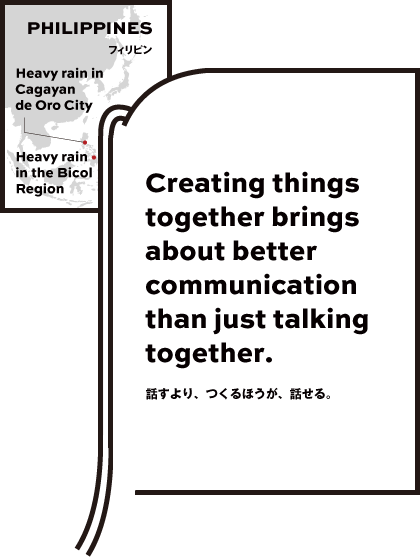 Creating things together brings about better communication than just talking together.
Creating things together brings about better communication than just talking together.
-

- 復興期
- アート
- Alma Quinto
- Artist
- FLOATING WOMBS
- a healing project through the arts –heArts

The works at the EARTH MANUAL PROJECT Exhibition
Create a sustainable program suitable for disaster survivors and their community
Having been interested in social work since her high school days, Alma Quinto has volunteered to work with different marginalized communities through various student organizations. At the University of the Philippines in Diliman, she graduated with a Bachelor of Arts in Philippine Studies majoring in sociology, anthropology, and psychology. She later did undergraduate courses in teaching and studio arts and then master’s courses in art studies majoring in art history. After college, she worked as a community worker at an NGO engaged in overseas foster care placement services for poor Filipino children. She also got involved with the Philippine Art Educators Association (PAEA) and organized culture-based art workshops for children and teachers in various communities and cultural institutions. Her art practice became more socially engaged and continues to seek creative partnership and collaboration with various disaster-affected communties through her House of Comfort Art Project and her work with the Artists for Crisis Program of the National Commission for Culture and the Arts (NCCA) and other NGOs. Ideologically and in praxis, she supports UNESCO’s idea of encouraging people and changing their attitudes through social artistry.
As to how artists should interact with communities, Quinto says, “When you work with a community, you should not behave like, ‘Look, I am the ARTIST and this is my workshop. So this is how it is’ (implying that you are in control of everything). Instead, you should assume the role of a FACILITATOR and work with the participants in such a way that they can express themselves freely and are involved in the creative processes. You draw them out and engage them in the workshop processes so they learn skills and understand concepts and create new meanings. In this way, they can organize similar workshops on their own after you leave the community.” These words of Quinto reflect her humble approach and strong commitment to art as a tool for community empowerment and independence.
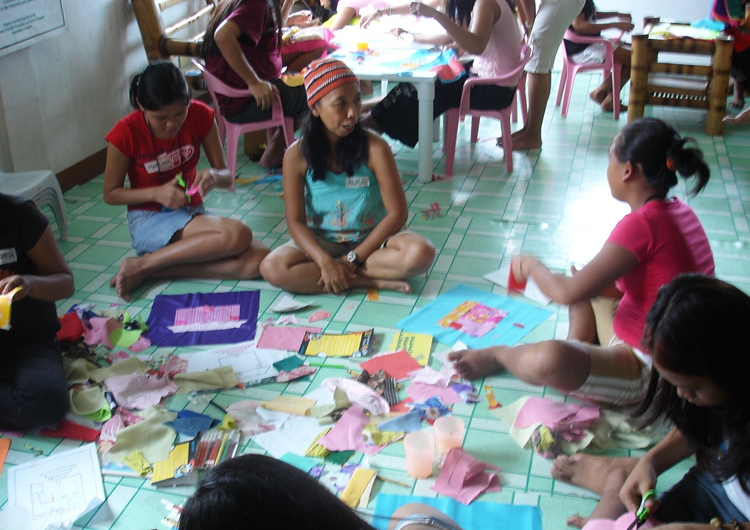
- Workshop organized and facilitated by Alma Quinto in Lapu-Lapu City, Cebu, 2007
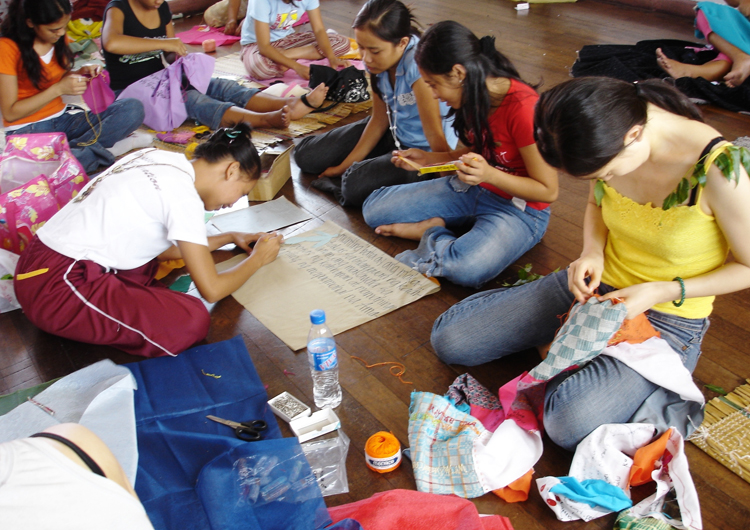
- Workshop organized and facilitated by Alma Quinto in Davao City, 2006
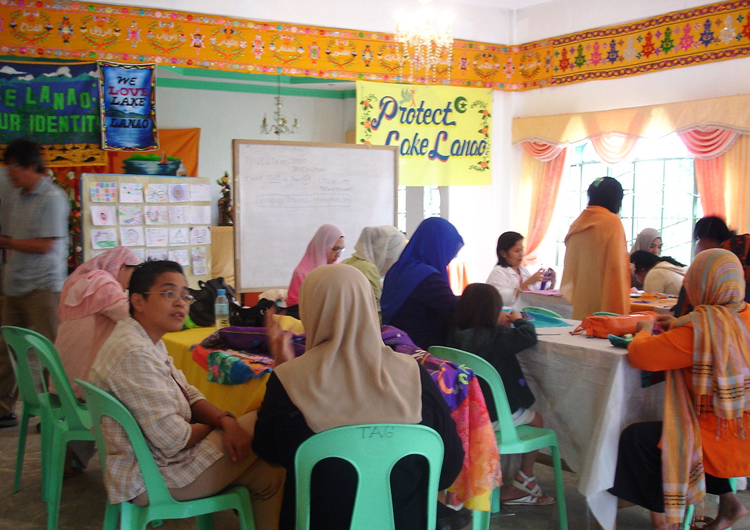
- Workshop organized and facilitated by Alma Quinto in Marawi City, 2007
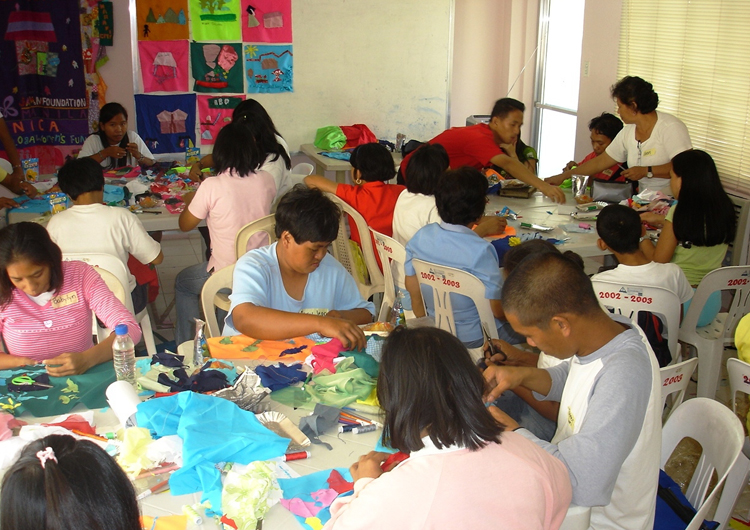
- Workshop organized and facilitated by Alma Quinto in Naga City, Bicol Region, 2007
The concepts are “liberation" and “solidarity"
Alma Quinto organized her first healing art workshop for natural disaster survivors in November 2006 in the aftermath of the damage caused by the typhoon and heavy rains in the Bicol Region. In Albay on Luzon Island in the Bicol Region, the torrential rain caused mudslides from a local active volcano where volcanic ashes had accumulated, burying local communities, flattening numerous houses and buildings, and bringing enormous devastation. In the wake of the disaster, the school being used as an evacuation facility was full of evacuees. In response to a request from a pastor who was supporting the evacuation center, Quinto held a workshop for 30 disaster victims within two days.
During the workshop, Quinto met a boy named Francis, who was only ten years old when Typhoon Reming hit Albay. The mudflow disaster carried off his father who was a pastor and his five siblings. Francis participated in the creative workshop given by Quinto and produced three drawings depicting his own experience of the “natural disaster” the “evacuation center” and “my dream”.
According to Quinto, this kind of workshop, which encourages participants to create art works, has two goals. One is to liberate disaster survivors from the negative experiences of the disasters. Another is to enable them to feel that they are connected with other people. To achieve these goals, participants are asked to create art works concerning their experiences in the disaster and their dreams for the future. They are then encouraged to talk and share their experiences with others, showing each what they have created. Sharing experiences will raise awareness about each other, leading to the development of a trust-based relationship and making it easier to liberate oneself from his or her experience. Ms. Quinto believes that, once this kind of relationship-promoting liberation is built up and several workshops have been held, this kind of opportunity will take hold in local communities, eventually leading to the liberation of people from their negative experiences.
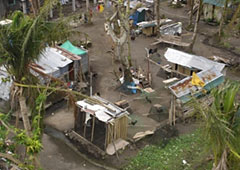
- A scene of Albay, a province in Luzon Island that was severely hit by the heavy rain in the Bicol Region
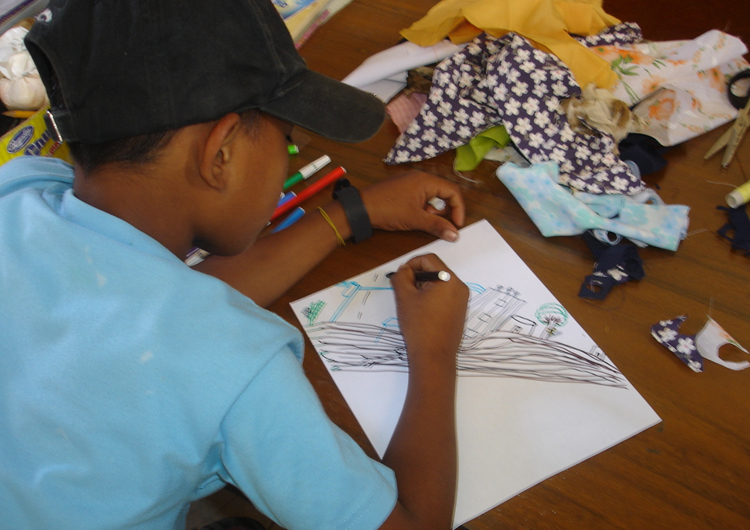
- Ten-year-old Francis, drawing a picture of his experience of a natural disaster during the workshop in Albay
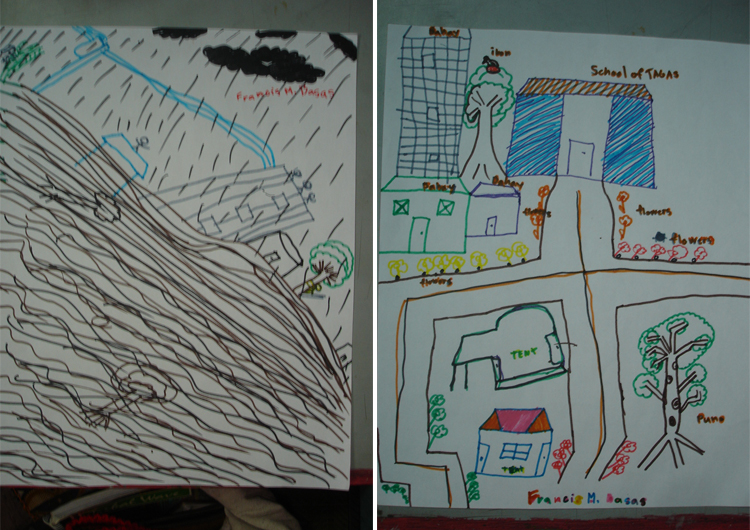
- Pictures of the natural disaster drawn by Francis
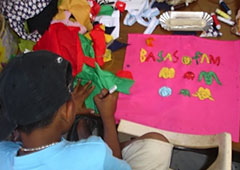
- Francis sewing a patchwork based on his own drawings
Incorporating different creative activities
on a case-by-case basis
In November 2012, in a public school in Barangay Puntod in Cagayan de Oro City which is used as an evacuation center during a disaster, Alma Quinto organized several creative workshops for the survivors of Typhoon Sendong in collaboration with Puntod Barangay Council. These workshops included drawing, theater, dance, creative writing and storytelling for children and sewing and cooking for women. They all aim at helping disaster survivors liberate themselves through various creative activities. The cooking workshop intends to: (1) provide nutritious food to all the participants because the nutritional quality of food served at evacuation facilities was poor; (2) buy ingredients, mostly local produce, for the cooking workshop within the limited budget usually allotted for the purchase of art materials in other types of workshops; and (3) teach evacuation facility staff how to serve better food in the event of future disasters. The facilitator of the workshop is the owner of a local university whose hobby is cooking.
In the same way as in other workshops involving creative activities such as drawing and patchwork, this cooking workshop focused on two major themes; namely, “liberating participants from disaster experiences” and “helping participants develop a sense of being connected with the people around them.” One of the most important aspects of this workshop is that all the women participants cook together. While cooking together, they have more opportunities to communicate and share their disaster experiences with each other. Also, cooking and eating together fosters a sense of unity among all the participants. Moreover, table arrangement was incorporated into the workshop, making the event even livelier and further strengthening ties among the participants.
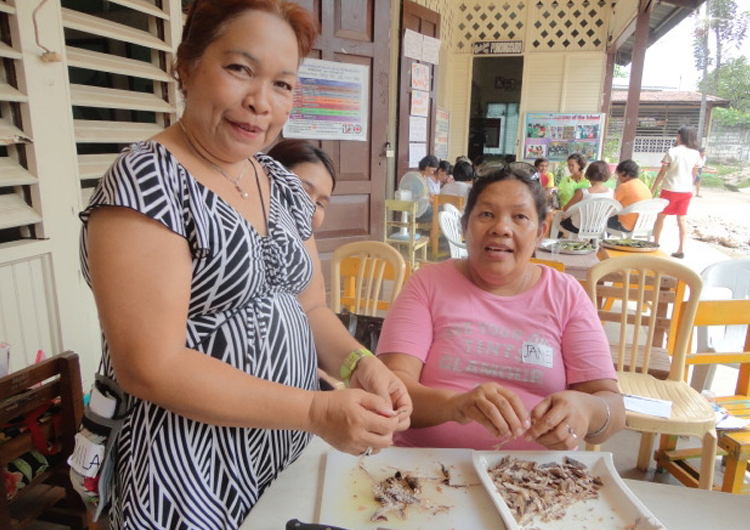
- Participants in a cooking workshop held in Barangay Puntod, Cagayan de Oro City
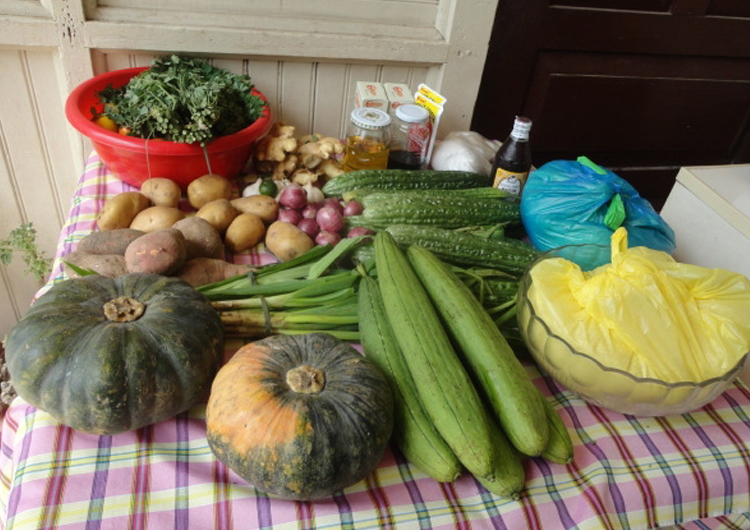
- Ingredients for the cooking workshop were procured with the money usually allotted for the purchase of art materials
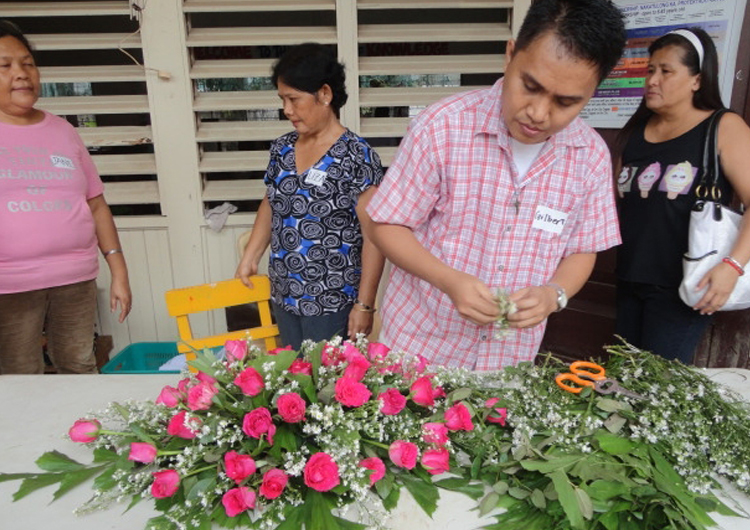
- Learning how to set the table creatively is part of the cooking workshop
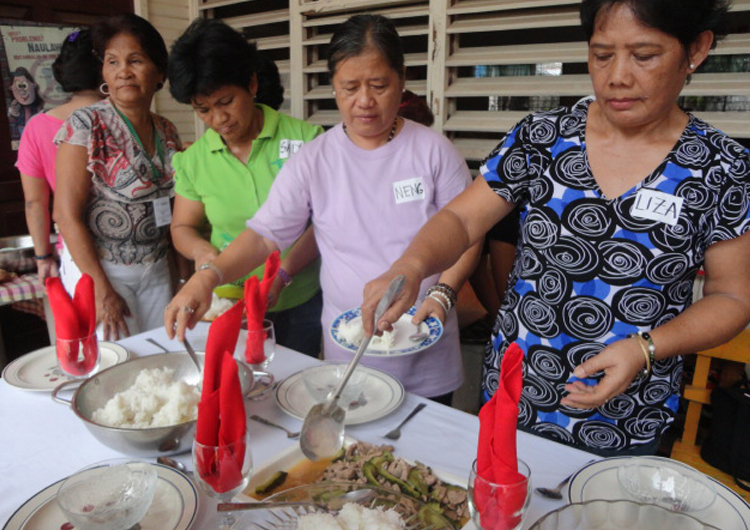
- Eating together fosters a sense of unity among participants